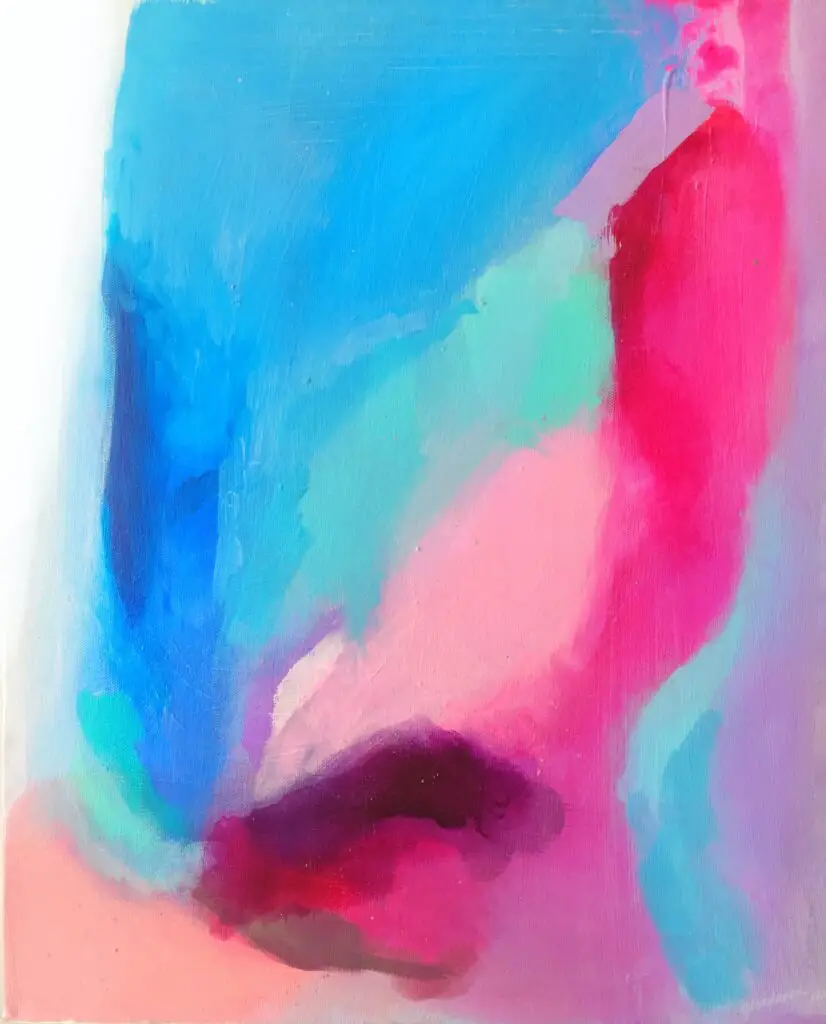So you’ve found yourself with an old painting that just doesn’t fit your style or your space anymore. Don’t worry, we’ve got you covered! Our amazing product, “How Do You Paint Over An Existing Painting,” is here to help you transform that outdated artwork into a masterpiece of your own.
With simple and easy-to-follow steps, you’ll learn exactly how to breathe new life into your existing painting, giving it a fresh and personalized touch that reflects your unique style. Say goodbye to uninspiring artwork and hello to your very own work of art!

How Do You Paint Over An Existing Painting?
Table of Contents
Preparation
Gather Your Materials
Before painting over an existing painting, it’s important to gather all the necessary materials. This includes paint, primer, brushes or rollers, sandpaper, a drop cloth or newspaper to protect the surrounding area, and a ladder or step stool if needed. Having all the materials ready beforehand will save you time and ensure that you have everything you need to complete the painting project.
Choose the Right Surface
The surface on which you will be painting is an essential factor to consider. It could be a canvas, wood, metal, or any other material. Each surface may require a different approach when it comes to painting over an existing artwork. For instance, if you’re working on a canvas, you may need to consider the type of paint used and the texture of the surface. Understanding the surface you are working on will help you choose the appropriate materials and techniques for the best results.
Clean the Surface
Before painting over an existing artwork, it’s crucial to clean the surface thoroughly. Any dirt, dust, or grease on the surface can affect the adherence of the new paint. Use a mild detergent and a clean cloth to clean the surface. If there are areas with stubborn stains, you may need to use a gentle scrub brush or sponge. Allow the surface to dry completely before moving on to the next step.
Sand the Surface
Sanding the surface is an important step to create a smooth and even base for the new paint. Use fine-grit sandpaper to gently sand the surface in a circular motion. This will help to remove any bumps, imperfections, or rough areas on the existing painting. However, be cautious not to sand too aggressively, as you don’t want to damage the artwork beneath. After sanding, wipe away any dust with a clean cloth or tack cloth.
Priming
Select a Primer
Choosing the right primer is crucial for successfully painting over an existing artwork. Primers create a smooth and even surface, improve paint adhesion, and help seal any stains or discoloration. Depending on the material and the condition of the existing painting, you may need a specific type of primer. For example, if you’re working with a water-based paint, choose a primer suitable for water-based paints. Similarly, if the existing artwork has noticeable stains, opt for a stain-blocking primer.
Apply the Primer
Once you have selected the appropriate primer, it’s time to apply it to the surface. Use a brush or roller, depending on the size of the area you’re covering, to evenly apply the primer. Make sure to follow the manufacturer’s instructions regarding drying time and the number of coats required. Allow the primer to dry completely before moving on to the next step.
Choosing Paint
Decide on Paint Type
When painting over an existing artwork, choosing the right type of paint is essential for a successful outcome. There are various options to consider, such as acrylic, oil, or water-based paints. Acrylic paints are known for their versatility, quick drying time, and ease of use, making them a popular choice for many artists. However, depending on your desired effect and the existing artwork, you may opt for a different type of paint.
Consider the Colors
Choosing the colors for your new painting is an exciting part of the process. Consider the mood, style, and theme you want to convey through your artwork. You can either choose colors that complement the existing painting or go for a completely new color scheme. Experimenting with different color combinations can help you create a unique and visually appealing piece of art.
Painting Techniques
Brushing
Brushing is one of the most common and traditional painting techniques. Use a brush with bristles suitable for the type of paint you are using. Dip the brush into the paint and apply it to the surface in smooth and even strokes. Brushing allows for precise control and is ideal for detailed work or creating texture in your painting.
Rolling
Rolling is another popular painting technique, especially for larger areas. It involves using a paint roller to apply the paint evenly over the surface. Rollers allow for faster and more efficient coverage, making them a great choice when painting larger sections. However, they may not be as suitable for intricate or detailed work.
Spraying
Spraying is a technique that provides a more uniform and professional finish. It involves using a spray gun or aerosol cans to apply the paint. Spraying allows for a smooth and even application, making it ideal for achieving a flawless finish. However, it requires proper equipment and ventilation to ensure safety and prevent overspray.

Coverage
Number of Coats
The number of coats needed will depend on the desired opacity and the quality of coverage achieved with each layer. In some cases, a single coat may be sufficient, while in others, multiple coats may be necessary to achieve the desired effect. Allow each coat to dry completely before applying the next one. This will help prevent the paint from becoming too thick or uneven.
Drying Time
Drying time is an important consideration to ensure that the paint sets and adheres properly. Follow the instructions provided by the paint manufacturer regarding drying time. It’s essential to allow each coat to dry fully before proceeding with additional layers or any further steps in the painting process. Patience during drying time will help you avoid smudging or damaging the artwork.
Texture and Finish
Smooth Finish
If you prefer a smooth and seamless finish, it’s important to pay attention to your painting technique. Use smooth and even strokes when applying the paint. Sanding the surface between coats can also help create a smoother finish. Additionally, using a primer can help create a smoother base for the paint to adhere to.
Textured Finish
If you desire a more textured or layered appearance, there are several techniques you can explore. Use a palette knife or different brushstrokes to create texture and depth in your painting. You can also experiment with different tools or materials to add texture, such as sponges, stencils, or even natural elements like leaves or twigs.

Blending and Layering
Blending Colors
Blending colors allows for seamless transitions between different hues and creates a sense of depth in your painting. To blend colors, apply adjacent colors to the surface and use a brush or a blending tool to merge them together. Work with wet or partially dried paint to achieve the desired blending effect.
Layering Techniques
Layering is a technique that involves applying multiple layers of paint to build up depth and create richer tones. Start with lighter colors and gradually add darker shades, allowing each layer to dry before applying the next one. Layering can result in a more vibrant and dynamic painting.
Adding Details
Painting Fine Lines
To paint fine lines, it’s important to choose a brush with a fine tip. Dip the brush into the paint and remove any excess by gently wiping it on the edge of the paint container. Use steady and controlled movements to create precise lines. Practice on a separate surface before applying fine lines directly to your painting.
Using Different Brushes
Using different brushes can help you achieve a variety of effects and textures in your artwork. Experiment with brushes of different sizes, shapes, and bristle types. Flat brushes are ideal for broad strokes, while round brushes can be used for smaller details and controlled lines. Playing with different brushes will allow you to explore and discover new artistic possibilities.

Sealing the Painting
Choose a Sealer
Once your painting is complete and has dried thoroughly, it’s essential to protect and preserve it with a sealer. Select a sealer suitable for your painting’s medium and finish. There are various options available, such as varnishes or fixatives. Sealing your painting will help protect it from dust, UV damage, and moisture, ensuring its longevity.
Apply the Sealer
Follow the instructions provided by the sealer manufacturer to apply it correctly. Use a clean brush or a spray bottle to apply an even coat of sealer over the entire surface of the painting. Allow the sealer to dry completely before displaying or storing your artwork. Applying a sealer will not only protect your painting but also enhance its colors and overall appearance.
Maintenance and Care
Cleaning the Painting
Regular cleaning is necessary to keep your painted artwork in good condition. Use a soft, dry cloth or a feather duster to remove dust or dirt from the surface. Avoid using harsh cleaning agents or abrasive materials that could damage the paint. In case of stubborn stains or marks, consult a professional art restorer for guidance.
Avoiding Damage
To prevent damage to your painting, take certain precautions. Avoid exposing the artwork to direct sunlight or extreme temperature and humidity conditions. Store the artwork in a clean and dry environment, preferably wrapped in acid-free paper or stored in a protective case. When transporting or handling the painting, support it carefully and avoid putting pressure on the painted surface to prevent smudging or scratching.


